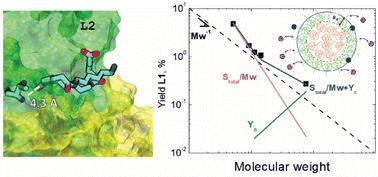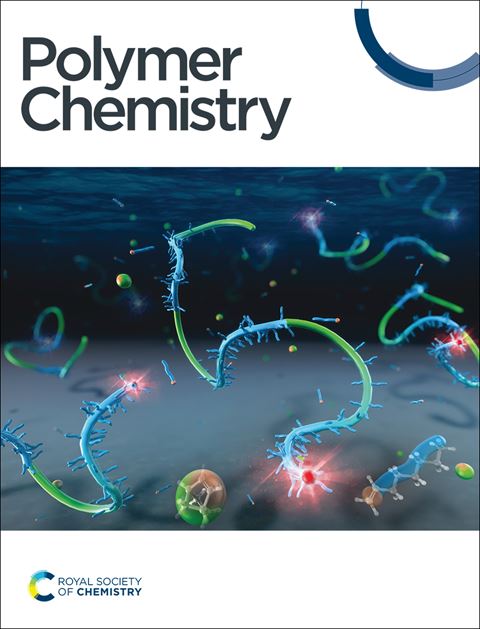尼龙水解酶对尼龙-6,6水解的调节因素
IF 3.9
2区 化学
Q2 POLYMER SCIENCE
引用次数: 0
摘要
聚酰胺的酶水解可降低反应温度、消除有毒有机溶剂并提高产品选择性,从而为减少化学回收对环境的影响提供了一种可行的方法。要实现这一目标,就必须提高酶水解的低总产率。在这项工作中,我们研究了使用可恒温的尼龙水解酶水解商用尼龙-6,6 聚合物的机理,并确定了影响效率和解构产物产量的底物特征。这些结果将指导开发有效的底物预处理方法,以通过酶水解提高有价值的低聚酰胺结构单元的产量。本文章由计算机程序翻译,如有差异,请以英文原文为准。

Factors modulating the hydrolysis of Nylon-6,6 by a nylon hydrolase enzyme†
The enzymatic hydrolysis of polyamides offers a promising approach to reduce the environmental impact of chemical recycling by enabling lower reaction temperatures, eliminating toxic organic solvents, and enhancing product selectivity. Achieving this goal will require increasing the low overall yield of enzymatic hydrolysis. In this work, we studied the mechanism of hydrolysis of commercial Nylon-6,6 polymer with a thermostable Nylon hydrolyzing enzyme and identified the substrate characteristics that influence the efficiency and deconstruction product yield. These results will guide the development of effective substrate pre-treatment methods to improve the yield of valuable oligoamide building blocks via enzymatic hydrolysis.
求助全文
通过发布文献求助,成功后即可免费获取论文全文。
去求助
来源期刊

Polymer Chemistry
POLYMER SCIENCE-
CiteScore
8.60
自引率
8.70%
发文量
535
审稿时长
1.7 months
期刊介绍:
Polymer Chemistry welcomes submissions in all areas of polymer science that have a strong focus on macromolecular chemistry. Manuscripts may cover a broad range of fields, yet no direct application focus is required.
 求助内容:
求助内容: 应助结果提醒方式:
应助结果提醒方式:


